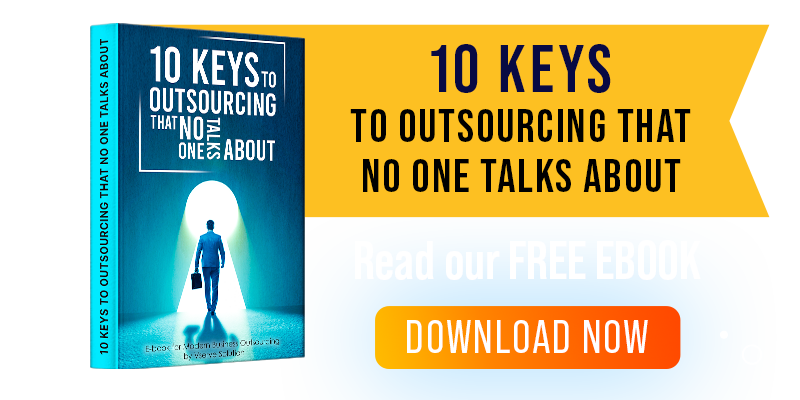Massive amounts of text, images, and videos are produced daily, and marketers need a mechanism to monitor the material their platforms charge for. It is essential to uphold a secure and reliable customer environment, track social influences on brand perception, and adhere to legal requirements.
The screening of relevant content users upload on a platform is called online content moderation. The procedure entails the use of pre-established guidelines for content monitoring. The content is flagged and deleted if it does not adhere to the rules. The causes can range from:
- Violence
- Offensiveness
- Extremism
- Nudity
- Hate speech
- Copyright violations
- A plethora of other issues
Online content moderation aims to maintain the brand's trust and safety program while making the platform safe. Social media dating websites, applications, markets, forums, and other platforms frequently employ content moderation. In this blog, let's dig deeper into the different types of content moderation services and technologies used.
The Need for Online Content Moderation
Platforms that rely on user-generated content need help to remain on top of an adequate amount due to the massive amount of content created every second. Therefore, the only method to maintain a tap on a brand's website per your standards is by filtering offensive text, photographs, and video content.
Additionally, it aids in preserving your reputation and your clientele. With its assistance, you can ensure that your platform fulfills the intended function and does not provide a platform for spam, violent content, or other inappropriate material.
When determining the optimal method to handle content moderation services for your platform, many considerations come into play, including:
- You put business first
- The many forms of user-generated content
- The characteristics of your user base
Types of Content Moderation Services
In this section, let's see the main types of online content moderation processes you can choose for your brand.
1. Automated Moderation:
Automated online content moderation significantly relies on technology, particularly AI-powered algorithms, to screen and evaluate user-generated content. Comparatively, it provides a quicker, simpler, and safer method than manual human moderation.
Automated tools for text moderation can recognize problematic words, pick up on conversational tics, and do relationship analyzes to assess the content's suitability.
Images, videos, and live streams are monitored for visual content using image recognition driven by AI techniques like EMAGA. This artificial intelligence (AI) technologies can recognize improper imagery and offer options for limiting sensitive visual threshold levels and types.
Automated moderation is effective and exact when identifying and flagging potentially offensive or harmful information. It is important to remember that technology can only partially replace human inspection, especially in more complicated cases. By utilizing automated moderation, platforms can filter a lot of content, improve online content moderation efficiency, and shield users from spam, violence, and explicit content.
2. Pre-Moderation:
Online content moderation powered by technology improves accuracy and effectiveness but can only partially replace human review, especially in more complicated scenarios. Because of this, technology and human content moderation services are still used in automated online content moderation. It is the most complex method of approaching content moderation solutions.
Because of this, every piece of content must be evaluated before it is posted on your platform. An item is added to the review queue when a user uploads text or a picture. Only when the content administrator has expressly approved it, then it goes live. Although this is the most secure method of preventing hazardous content, this method of online content moderation needs to be more active and suitable for the quick-paced internet environment. However, platforms that demand high security still use this online content management technique.
3. Post-Moderation:
The most prevalent method for content screening is post-moderation online content moderation. Users can publish content whenever they want, but it must first go through online content moderation. To protect the other users, flagged items are taken down. Platforms work to speed up the review process so that relevant content doesn't remain online for an extended period, even though post-moderation is less secure than pre-moderation content moderation solutions. It remains the method of choice for many modern internet firms.
4. Reactive Moderation:
Reactive moderation is counting on people to flag content they deem offensive or violates your platform's policies. Reactive moderation as part of online content moderation services can be helpful in some circumstances. It can be used alone or in conjunction with post-moderation for the best outcomes.
In the latter scenario, users might still flag the content even after it has gone through your moderation procedure. If you wish to employ reactive moderation only, there are some hazards you might want to think about to have a twofold safety net.
5. Self-regulating Moderation:
Although a self-regulating online content moderation platform sounds excellent, it may result in appropriate content staying on your platform for excessive time. Your brand could suffer long-term reputational harm as a result of this. The online community is wholly relied upon for this form of online content moderation to assess and remove content if appropriate. Users use a rating system to indicate if a piece of material complies with the platform's rules. This topic is rarely used because it seriously affects brands' reputations and Lego compliance.
Two Steps to Implement Online Content Moderation
1. Establish Clear Parameters: It is essential to establish clear criteria that specify the content appropriate for your platform. These rules should cover various topics, including forbidden content types, extremism, violence, hate speech, nudity, and copyright violations. The requirements for user-generated content should be made very clear. Remember your target market, demography, and industry particulars when creating these rules. Content moderators will know what content to assess, flag, and remove if explicit criteria are established.
2. Establish Moderation Thresholds: Content moderators should adhere to a certain level of sensitivity when evaluating content. It entails establishing criteria for determining whether content must be removed or flagged. These criteria might consider user expectations, the impact on the platform's reputation, and the seriousness of the breach. It's imperative to strike the proper balance to prevent unduly strict or lenient online content moderation. Keep an eye on these criteria and modify them as necessary in response to user comments, shifting fashion trends, and altering legal requirements.
Conclusion
According to our analysis, there are several possible ways to moderate the content. Pre-moderation online content moderation is likely too slow for the volume of user-generated content today. Because of this, most platforms decide to examine content after it has gone live, which is then added to a moderation queue.
Automatic online content moderation is frequently combined with post-moderation to get the finest and quickest outcomes. You can mix the finest human and machine moderation with semi-automated content moderation. You can improve content moderation solutions with an AI-powered system, shielding moderators from a huge volume of hazardous content.
Experience superior content moderation solutions with Wow customer support from Vserve. You can confidently build your online presence and thank the knowledgeable content moderators for their assistance.
This blog is inspired by the video: "What is Content Moderation? Types of Content Moderation, Tools and More" by "Imagga."






